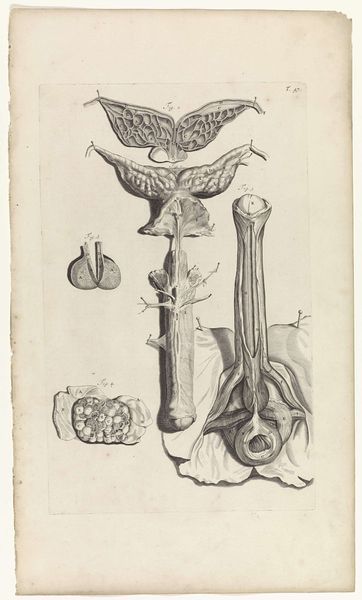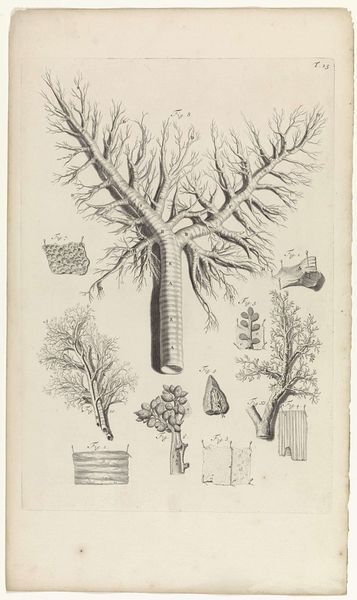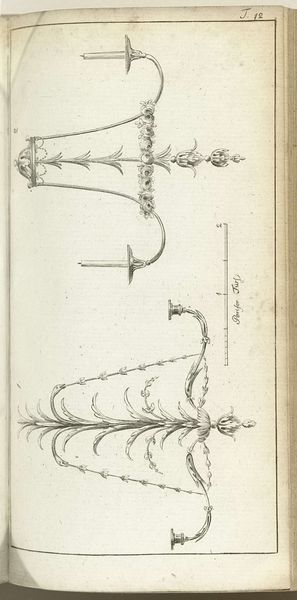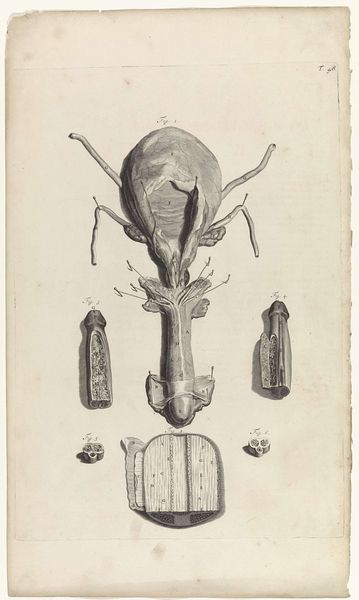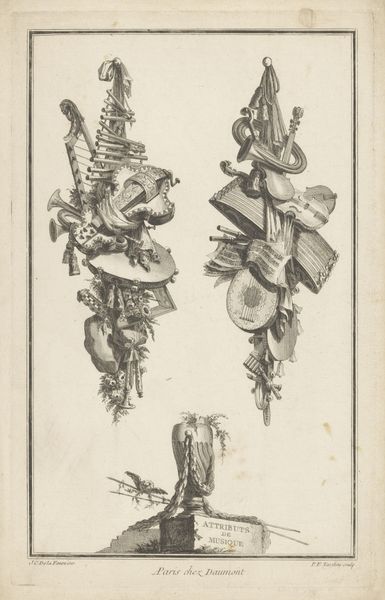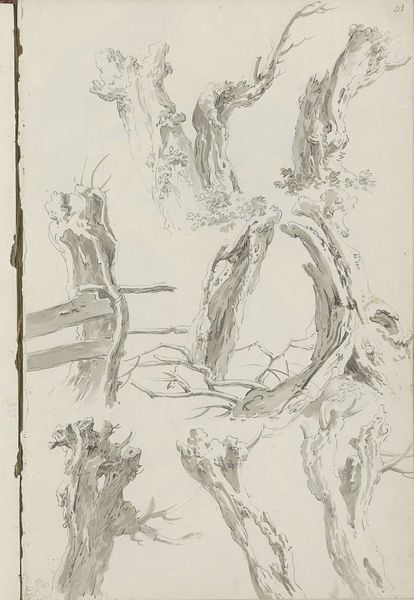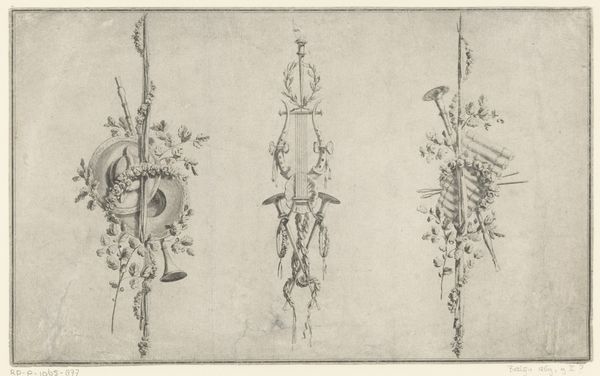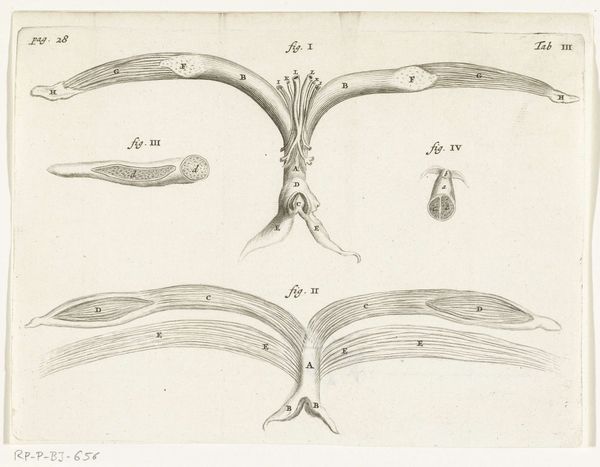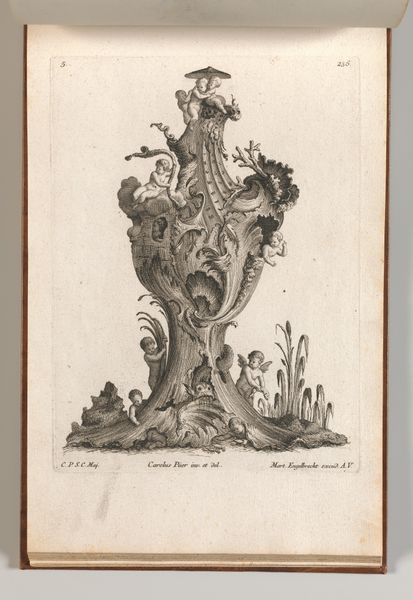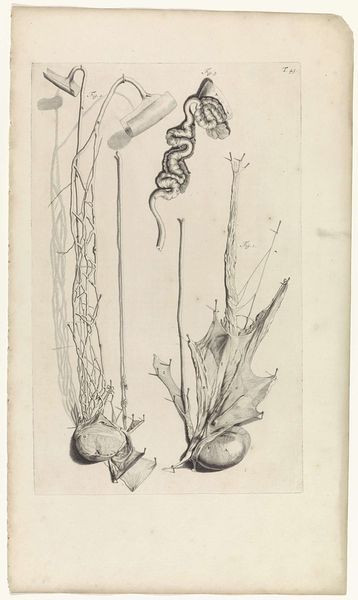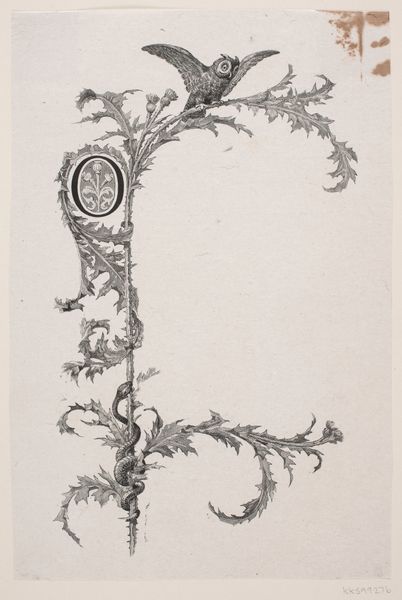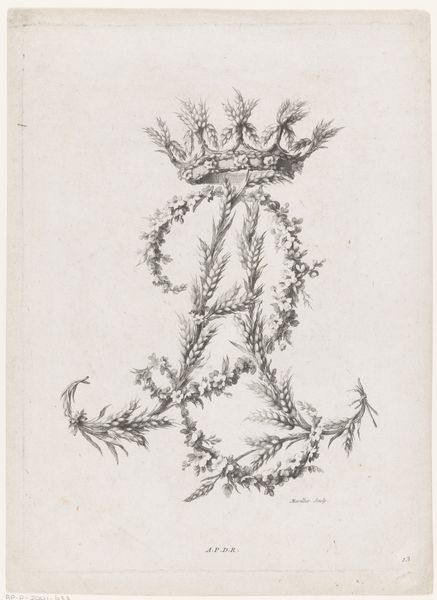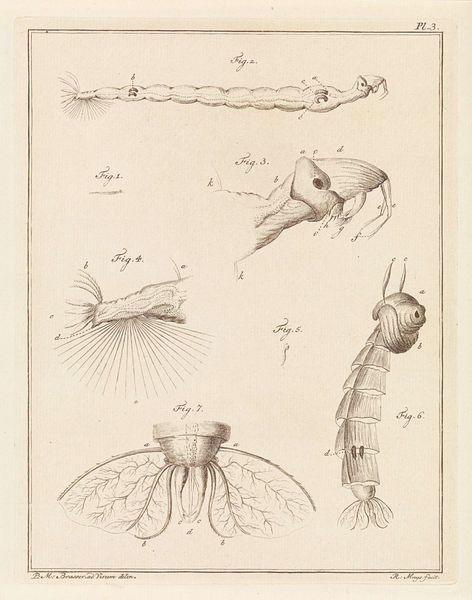
drawing, print, engraving
#
drawing
#
baroque
# print
#
pen sketch
#
form
#
line
#
history-painting
#
academic-art
#
engraving
#
realism
Dimensions: width 274 mm, height 440 mm
Copyright: Rijks Museum: Open Domain
Editor: Right, next up we have Pieter van Gunst’s *Anatomische studie van het wervelkanaal* from 1685. It's a drawing, an engraving, basically a detailed print of the spinal cord. It's intensely precise, but almost unsettling... a bit like staring at the inner workings of life. What do you see in this piece, that I might be missing? Curator: Oh, you're spot on with "unsettling." It's the peculiar beauty of cold, hard, *objective* reality, isn't it? I wonder what it says about the Baroque period's fascination with both the grandiose and the microscopic? It’s academic, precise…and yet, in its own way, poetic. Each carefully rendered line screams 'knowledge!' and… perhaps also 'mortality?' Editor: Mortality, definitely! It makes you intensely aware of your own physical body. But, a poetic take is an angle that wasn't on my radar. Do you think that someone, even back then, could have seen some beauty in this that goes beyond the scientific? Curator: Absolutely. Think of it like this: baroque art, even at its most ornate, constantly dances with the concepts of *memento mori* - remember you must die. This drawing, while scientific, whispers that same sentiment. The fleeting beauty of the body, the intricate mechanics destined to fail... there's a certain grandeur to that, a somber symphony played on bone and nerve. Does that click a little? Editor: Yes, totally. It bridges this drawing and other pieces from the era so well. Curator: Exactly! Perhaps art and science aren't such strange bedfellows after all, eh? Editor: Food for thought...thanks!
Comments
No comments
Be the first to comment and join the conversation on the ultimate creative platform.
